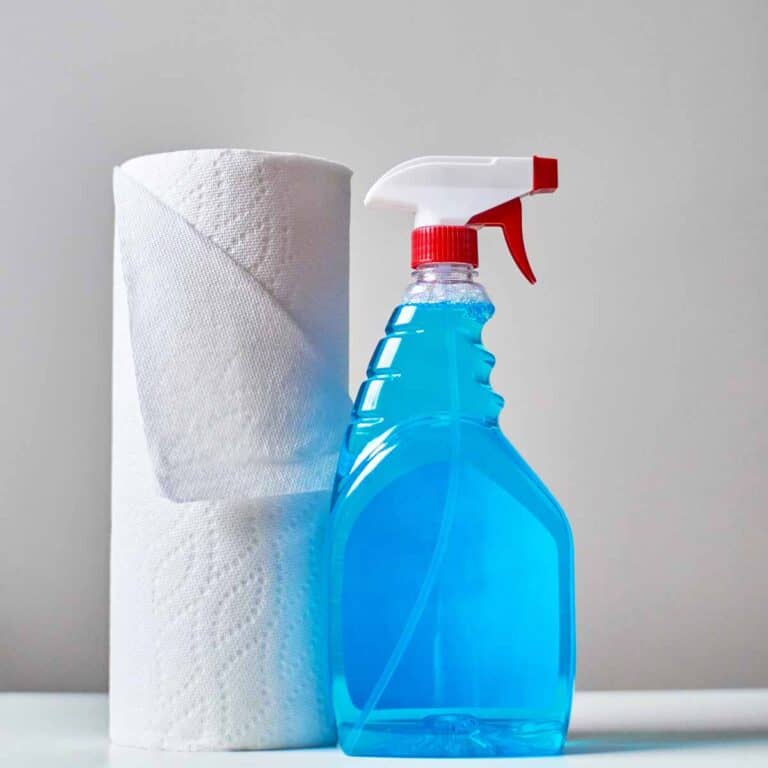Dampness Under Memory Foam Mattress (Why+How to Prevent)
Whenever one speaks of how to maintain a mattress or how to extend the life of a mattress, inevitably the issue of moisture comes up.
Water is a source of all life but too much of it can be problematic. In the case of a mattress – regardless of the type of mattress you own – even the presence of a small amount of water can spell unending problems for your mattress.
Why Is There Dampness Underneath Your Memory Foam Mattress?
The presence of moisture underneath your foam mattress can only mean one thing – that there is a source of water that needs to be plugged, so to speak.
Knowing how to dry out a foam mattress is only one part of the equation. However, not understanding where that moisture comes from and thus effectively addressing the root cause, the same problem is bound to reoccur for your mattress.
The dampness underneath your memory foam mattress could be due to one or a combination of the following:
- Your sweat
Let’s start off with the most obvious probably cause.
Sweating during sleep is a common issue faced by many people. It does not necessarily have to mean that you’re ill, but the human body goes through a change in body temperature as the mind and body transition into the resting mode – from higher changing to lower body temperature.
If you are a hot sleeper, sweating could happen through the night. Otherwise, the initial phase when you fall asleep could be when you need to find ways for the body to cool down.
- Drink spillage
Sometimes minor spillage can go unnoticed, or perhaps any such incident was not addressed immediately causing water to seep deep into the mattress.
With gravity, obviously the water, however, little amount that may be, will continue to seep downward until it reaches a physical barrier that does not allow it to penetrate any further.
It is often repeated that if an accident can occur, it likely will. It is just a matter of when not if.
- Mattress being placed directly on the floor surface
The presence of water in the mattress, regardless of its source, would translate into a problem if it does not find a way to escape.
As such, placing the mattress directly on the floor causes the moisture to be trapped between the underside of the mattress and the hard surface of the floor.
Not to mention the presence of water near or around the mattress presenting a risk of absorption by the mattress. Think of the mattress as a large piece of sponge just waiting to absorb any amount of water its surrounding throws at it.
This problem is even more pronounced for all-foam mattresses such as a memory foam mattress, or the gel memory foam type.
- Solid, impermeable bed base or mattress foundation
A potential problem that is similar in nature to a mattress that lays flat on the floor.
The type of bed base you use for your mattress is just as important as, if not more than, how you protect the mattress itself.
Structurally, a mattress that is well-supported will stay in good condition for longer. However, a base or foundation that does not allow the mattress to ventilate on the bottom surface can be an issue.
That is unless you regularly lift the mattress up from the said-impermeable base which is a habit that is easier said than done.
- Relatively higher humidity in the bedroom.
Humidity simply means the presence of a relative amount of moisture in the air.
As much as the bed is a comfortable place to snuggle in, some may spend more time in it doing a host of other activities as well.
It is noteworthy that the exhaled air contains more water vapor than the air inhaled.
The increased time spent in the bedroom, therefore, leads to reduced time for it to ‘rejuvenate’ from the constant presence of relatively higher humidity.
The problem is usually compounded by the windows staying closed most of the time, thereby trapping moisture within the room.
- Water leakage from the air-conditioning piping system
A temperature control system in the room typically consists of an air conditioner that requires a piping system running to and from it.
An air-conditioning piping system that runs within the wall cavity presents a relatively bigger problem than one that runs on the surface of the wall.
If the system is not maintained regularly, a choke can happen thus causing water to discharge at places it is not designed to.
Meanwhile, water leakage can also come from a broken pipe due to a blunt force impact, but it is more likely that the leakage comes from broken, loose, or simply aged pipe joints.
- Improperly installed window frames or roof leakage
Not all causes of water presence in the room are obvious culprits. It may not be what you do but could be due to defects in the building itself.
If water did not come from within the room, perhaps it has entered from outside the house.
The contact point between the window frames and the wall they sit in could have a gap that has not been properly sealed. Water does not need a large gap for it to come through, water always finds its way in.
If you notice dampness in the areas around the window frame, it is likely that you’ve found the root cause.
Another potential cause if a leaky roof. If you notice dampness on the wall that runs from the very top of the wall, now you know where to check and potentially fix it.
A bedroom in the basement could also pose obvious water seepage risks for it is the lowest point within the house.
- Water seepage from the attached bathroom
An en suite bathroom is convenient and provides a level of privacy anyone would enjoy in a bedroom.
However, having the bathroom right next to your bedroom could potentially allow water seepage into the bedroom via the shared wall.
The 2 main causes that enable water to move from one side of the wall to the other are:
- Broken water supply pipe that runs within the shared wall, or any damaged joints thereof.
- Improperly applied waterproofing system within the wall, underneath the tiling.
How to Dry Out a Wet Memory Foam Mattress?
Once you noticed that your foam mattress is wet, the most immediate task would be to dry it.
Assuming that there is no stain (yet) or the wet mattress does not give out an odor, drying it would be pretty straightforward.
To dry out a wet foam mattress, follow these steps:
- Remove the sheets, pad, and/or protector that are covering the mattress
Trip the mattress naked so that the drying process is quicker and more effective.
- Blot the mattress on the surface(s) that are wet using a clean and dry towel
The more obvious wetness on the surface of the mattress needs to be soaked up as much as possible. Use additional dry cloth is necessary.
- If drying indoors, stand the mattress on its side and dry it thoroughly using an electric fan
Drying with an electric fan is the most obvious method. However, you can also use a dehumidifier and heater in the room to accelerate the drying process.
- If drying outdoors, lay the mattress flat on stools and under direct sun
If and when you get sunny weather, drying outdoors in the sun would be the preferred method.
Place the mattress horizontally on at least 4 stools (more will provide better support) to prop it up. After a couple of hours of drying on one side, flip it to the other side for a thorough drying job.
Not only is the sun a natural and powerful dryer, but it is also an effective deodorizer. And it’s free!
How to Prevent Dampness Underneath the Mattress?
Understanding the causes of dampness on the bottom surface of the mattress makes it easier to apply the right solution in order to prevent it from becoming a recurring problem.
You can prevent dampness underneath the foam mattress by applying the following methods. You may need to combine two or more of them depending on your particular situation:
- Wear light and breathable sleepwear
Your sleepwear determines how well you sleep. Always choose breathable material to minimize sweating.
Hot sleepers may need to look into the type of mattress used. Perhaps a cooling mattress pad can help to sleep cooler.
- Avoid drinking on the bed
No food or drinks allowed in the bed – it’s probably the best policy you can adopt.
- Place your mattress on a bed base that promotes ventilation
If your mattress has been resting directly on the floor, it’s time to seriously consider getting some sort of mattress foundation.
Even a foundation that is a only few inches thick but solidly-constructed can make a world of difference in lifting the mattress off the floor.
- Stand the mattress on its side occasionally to allow any trapped moisture to escape
Occasionally when the sheets and mattress protector are changed, take the opportunity to stand the mattress on its side and against the wall, exposing the underside of the mattress. Even if it’s just for a couple of hours.
This helps to prevent any moisture buildup that encourages more serious problems like mold growth to take root.
- Use temperature control or a dehumidifier when sleeping
In addition to appropriate sleepwear material to prevent sweating, use temperature control to achieve a comfortable condition to sleep in.
Additionally, set the temperature to be lower at the start, gradually switching to slightly higher temperatures to correspond to the change of body temperature as you fall asleep.
- Check for building defects that allowed water seepage from building exterior
As discussed earlier, check for potential water seepage at the joints between the window frames and the wall, as well as between the top end of the walls and the roof.
If water seepage or leakage exists, contact a building contractor to have it fixed.
- Place the bed away from the wall where the air-conditioning unit is fixed
Water leakage due to defects in the building or any installation on the wall can happen, not just from improper construction but could simply be due to aging parts.
What you can do is to move the bed away from potential sources of water leakage, if at all possible. This will buy you valuable time as the problem, if any, is discovered and fixed without affecting your mattress.
- Keep the window open to allow natural ventilation into the room whenever possible
In the natural course of using the bedroom, moisture content can build up in it. It is unavoidable, but the potential damage caused by moisture is preventable.
Letting the windows open during the day allows the room to get the much-needed air change to reduce humidity buildup and freshen the room.
Apart from making the bed every morning, add this task to your to-do list. Simple things like this can do wonders for your sleeping space.
Is a Mattress Ruined If It Gets Wet?
Before you decide to throw out your wet mattress, understand the root cause of the problem, and see if it is salvageable.
A mattress is not ruined when it becomes wet from the spillage of plain water. Ensuring thorough drying could simply mean a longer wait for it to dry using a fan, or under the sun. Even minor stains can be spot-cleaned using an alcohol solution or white vinegar. However, if the wetness and the subsequent stain and odor are caused by flavored and colored drink, or frequent bedwetting, where the damage is substantive, it may be easier and healthier to buy a new mattress instead.






